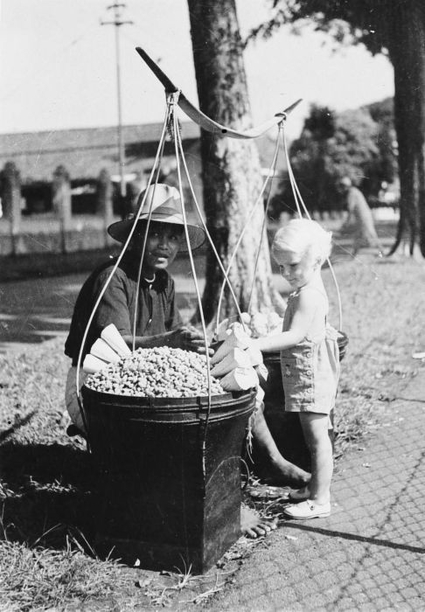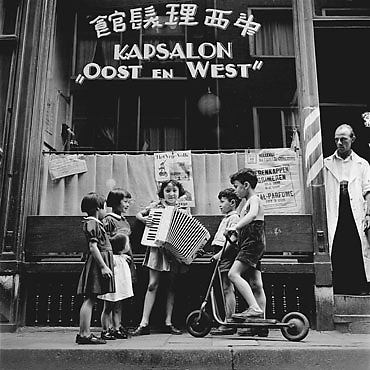This powerful conversation epitomizes the harrowing barrier between a majority and a minority group. It speaks volumes of historical discourse regarding the smell of the Other as no new invention. Smell, and the other senses was an awful buttress for historical prejudice and racism. The othering of a minority did not originate from an unfamiliarity with foreign bodies; instead, it is more often the other way around. Historical rhetoric often justifies prejudice by highlighting the “foreignness” of the Others’ bodies. There are no doubts that these are difficult and painful words to read through contemporary eyes; yet, what remains of this Dutch man’s recollections is a window into how race was constructed beyond abstract ideology, and utilizes sensorial experiences for validation. Smell, particularly, as a such a personal and idiosyncratic occurrence becomes a crucial part of racial rhetoric, to set a part or to shun away some minority communities. This was not a foreign practice even Amsterdam itself. Foreign bodies passing through Oosterdok, into Amsterdam, would have been segregated by a racial system that spewed similar rhetoric all the same.
The odiferous Othering propaganda can be traced back to Late Antiquity, between the Romans and Jews. One particular rhetoric often mentioned is Foeter Judaicus: the belief that Jewish bodies exuded a foul odour. Contemporary historian Eric Zafran traced the foetor judaicus’ providence back to 18th century anti-semitic writer Appelius, who had adapted medieval astrologer Abu Ma’shar’s observance of Saturnine personality. According to Zafran, Appelius had used Abu Ma’shar introduction into astrology (kitab al-mudhkar al-kabir) which stated:
“Saturn[‘s nature] is cold, dry, melancholic, dark, of heavy harshness. And perhaps he will be cold [and] moist, heavy, of stinking odor, and he is of much eating and true esteem”
to propagate 18th century anti-semitism as the Jews were associated with Saturn since medieval time (Wurgaft, 2006). Based on this notion, Nazi propaganda in Mein Kampf also included:
“… you could tell that these were no lovers of water … you often knew it with your eyes closed. Later I often grew sick to my stomach from the smell of these caftan wearers…”
In examining race and smells, how smell of the offensiveness of the Other’s bodies quickly becomes obvious. Here, we come back to the first quote: sweat. It becomes an important ‘reasoning’ as to why the Other smells ‘badly’. 18th century writer, Albrecht Haller, noted sweat as an “effluvia” from “ the essential oil of the animal” which arose “from the elemental particles of the bod” (Tullet, 2016). As a result, this distinguished the smells of races from each other, and placed personal smell as a pillar in racial identity. Terribly, the pre-modern notion of blackness amongst the Dutch was defined in a Dutch dictionary, using sensorial language amongst other things: “The Negroes’ colour is black; the fumes from their skin have a peculiar, rancid smell which is attributable to the somewhat oily state of their sweat, which generates a sour acid as a result of an unclean lifestyle…” (Blakely, 1993).
At the same time, Amsterdam’s Chinatown gained similar traction regarding its establishment in the 20th century. All over the world, Chinatowns were historically seen as an odiferous pit of unhygienic activities, linked to “ the foul-smelling sub-culture of opium smoking” (Reinarz, 2014). To justify these prejudices, often racial discourse following Chinese diaspora in Europe included talks of public hygiene and spread of disease through close proximity and volume of people occupying small spaces. But these conversations regarding smell and the Other is not reserved only for the powerful to create segregation amongst communities. We return back to the bottom half of our beginning quote.
Smell and the Other happens both ways. As the Dutch thought poorly on the Javanese, the Javanese felt the same of the Dutch and their eating habits. What this shows is that power majority often employs the senses to justify a specially constructed social hierarchy. But equally, prejudices occur both ways, just as the Javanese against the Dutch. And senses are strong tools to help buttress ideologies. In history, regardless of justification, it is clear: “an offensive smell is blamed for, and comes to symbolize, a barrier between people.” (Wurgaft, 2006).
Now, to reflect on our contemporary times, how do we associate smells with unfamiliar bodies, if we are in fact doing it?

